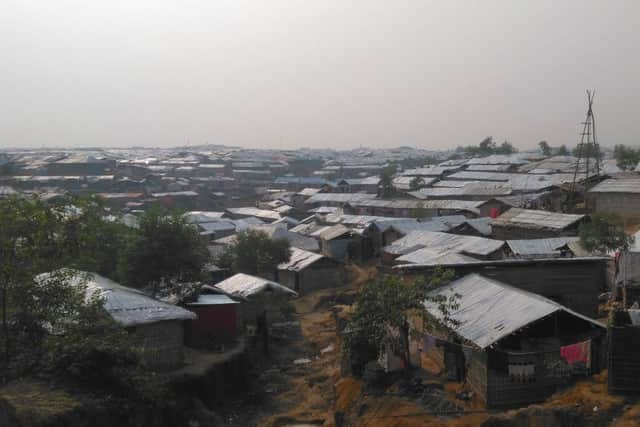Firefighter returns from his biggest rescue mission yet


He was part of the UK International Search and Rescue Team working in refugee camps with more than 600,000 Rohingya people who have fled Burma.
The 54-year-old arrived home in Shoreham this morning and spoke to the Herald about the unusual conditions the team faced when they arrived at Kutupalong Camp, south of Cox’s Bazar.
Advertisement
Hide AdAdvertisement
Hide Ad“It is the hot, dry season but we arrived, incredibly, in the rain, which is as unusual as snow in London in June. We also had some fog, which is also quite unusual,” he explained


Neil and his team are experts in logistics. Alongside security, their job was to help move the medical team, set up accommodation, work at the treatment centres on the infrastructure, such as water and waste, and deal with equipment.
The medical team they were supporting was looking at cases where diptheria had developed, putting in place a course of treatment and then locating others they had been in contact with to test them.
Neil explained: “The aim is that our intervention is so successful, the team is able to withdraw after a few weeks.
Advertisement
Hide AdAdvertisement
Hide Ad“There was already a very good immunisation programme in place, so 90 per cent of the Bangladeshi people are already immunised. There is also a good programme in place for the refugees who come in. The vaccine is very successful and in the UK, there has not been a case of diptheria for six years.


“Once someone has developed diptheria, they are given a course of Diphtheria Antitoxin and it is a very successful intervention.
“Unfortunately, in the circumstances, it is a case of getting the people to the treatment. You have to build a centre suitable for the care of the people and go out to the community to make them aware of it.
“In general, the worst affected groups are children. The UK team was treating some very young children, which is obviously very distressing.”
Advertisement
Hide AdAdvertisement
Hide AdNeil’s team helped set up three centres, two of them in the main camp, which measures about 30km by 20km.
Most of the areas where they were working were muddy and the area was packed with people.
Neil said: “This was on a much larger scale and operating over a much greater area than we usually work.
“The most difficult thing for most people is to switch off to the size of it and what we as individuals can do to help, and concentrate on doing what you can, which is more beneficial.”
Advertisement
Hide AdAdvertisement
Hide AdNeil’s speciality is vector control, which means eradicating creatures that spread disease. He was able to advise the camp organisers generally on ways to control the insects and rodents.
Neil said: “I genuinely have rarely met such friendly, happy, incredible people and all of the refugees we met were unfailingly good humoured in the face of incredible adversity. There was no hassling of us and no pushing and shoving.
“Parts of the camp have been there since the 1990s, so some areas are relatively well established with quite complex communities already set up in it. Since August, another 250,000 people have arrived.”
Neil was replaced by another volunteer logistician from International Search and Rescue, who will also spend three weeks there.
Advertisement
Hide AdAdvertisement
Hide AdNeil said: “The next big problem is likely to be the monsoon season in three months, because most of the roads are hard-packed earth and much of the vegetation has been removed to be used as wood.”
• Benefit from an ongoing discount on your Herald by joining our voucher membership scheme. Once you’ve subscribed we’ll send you dated vouchers which can be exchanged for your paper at any news outlet. To save money on your Herald simply click here.